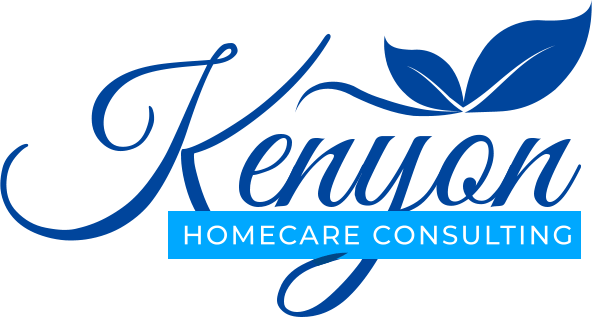Navigating the Supply and Demand Challenges in Home Care

Over the years, there has been a growing issue with the supply of nurses and home care aides. This is particularly true for home care agencies. With the increased competition from hospitals, skilled nursing homes, Medicare home health and hospices for these workers, it has become increasingly difficult to recruit and hire.
There are multiple reasons for this decline in workers which dates back to the 1980’s when President Regan hired the Pew Commission to determine the number of nurses in the country. The findings indicated that there were plenty of nurses, but they were maldistributed. In other words, there was no recognition that nurses, like doctors had specialties. As a result, the federal government withdrew funding support for nursing schools across the country. This decreased funding from over $100.3 million in 1980 to $46.4 million in 1982. In the next year, enrollment opportunities at universities diminished considerably and in California, 34 schools of nursing closed. Other contributing factors were the shift toward the academic settings for nursing education, the recessionary pressures of the 70s and 80s, general decline in enrollment in the schools, and perhaps the decrease in career days in high schools where nursing and other professions were promoted.
Due to the decrease in nursing schools and enrollment, the US depends heavily on nurses from the Philippines, India, Mexico, Jamaica, Nigeria and Haiti to bridge the healthcare needs in the country. With the current immigration situation, there is a realistic potential for further recruitment issues in the home care industry.
Potential Solutions for Nursing:
- Improve working conditions: Address the demanding nature of the job while providing better training and support to improve job satisfaction. Provide support to the field workers via text and zoom or with in-person meetings to promote help for and in recognition of the employees.
- Visa backlogs: Recent visa freezes have created a backlog and prevented thousands of qualified international nurses and aides from entering the US workforce impacting patient care at all levels. Advocate for the release of the blocked visas through the national associations and your elected officials. Provide data to support the needs of the industry.
- Promoting the profession of nursing involves several key strategies: Emphasizing the vital role nurses play in healthcare, highlighting the growing demand and job security, promoting professional development/ training opportunities, and advocating for improved working conditions all play a vital role. We suggest that agencies work with local high schools to promote a career day for the seniors. Nursing as well as home care aides need to be promoted as viable career options.
Regarding Home Care Aides:
The shortage for home care aides is a bigger issue than nursing shortages. The Bureau of Labor Statistics projects nearly 718,900 job openings for home health and personal care aides annually through 2031, according to the Bureau of Labor Statistics. In the United States, immigrants make up approximately one-third (32%) of the home care workforce, according to a KFF issue brief. This percentage is higher than their statistics of the overall direct care workforce at 28% (which also includes nursing facilities and residential care settings).
In 2023, KFF reports over 500,000 naturalized citizens and over 300,000 non-citizen immigrants were working as direct care workers providing long-term care in the U.S. according to KFF. Immigrants are particularly crucial in the home care sector, where they represent a larger share of the workforce compared to other long-term care settings.
Potential Solutions for Home Care Aides:
- Highlight the rewards: Emphasize the positive impact home care aides have on their clients' lives by helping them to maintain independence and quality of life in their own homes. Share stories of how aides provide companionship, support daily tasks, and offer peace of mind to both clients and their families.
- Focus on career growth: Home care aide positions offer a strong career outlook with high demand projected for the future. Showcase the potential for advancement within the field such as becoming a certified nursing assistant (CNA) or specializing in specific care areas.
- Advocate for Better Pay and Benefits: Publicize the importance of fair wages and comprehensive benefits for home care aides to attract and retain qualified professionals. Advocate for policies that support higher pay, health insurance, paid time off, and other benefits that recognize the value of their work.
- Investing in training and professional development: Support initiatives that provide high quality training and ongoing professional development opportunities for home care aides. This includes specialized training such as dementia care, end-of-life care, managing chronic conditions, and leadership training for those seeking advancement.
- Raising Public Awareness: Launch public awareness campaigns to educate the public about the vital role of home care aides and the challenges they face. This can involve sharing personal stories, highlighting the benefits of home care, and promoting a positive image of the profession.
- Addressing Burnout: Acknowledge the potential for burnout among home care aides and implement strategies to support their well-being such as providing access to mental health resources and promoting work-life balance.
- Promoting Diversity and Inclusion: Ensure that the home care profession is welcoming and inclusive of individuals from diverse backgrounds and experiences.
- Strengthening Collaboration: Foster collaboration between home care agencies, healthcare providers, policymakers, and community organizations to create a supportive ecosystem for home care.
Kenyon Home Care Consulting works diligently with agencies to solve the supply and demand issues by providing chronic disease, culinary arts. housekeeping, home PT, and end of life care education for nurses, PTs and Aides in the industry. Kenyon also works with organizational management to mentor and support the development of a corporate culture that helps address these issues in creative ways that meet the needs of the individual agencies. If you are experiencing turnover greater than 30%, Contact us at Kenyonhcc.com or call 206 721 5091.
Results Based Consulting
Did you find value in this blog post? Imagine what we can do for your home care or hospice agency. Fill out the form below to see how we're leading the industry with innovation, affordability, and experience.
Contact Us










